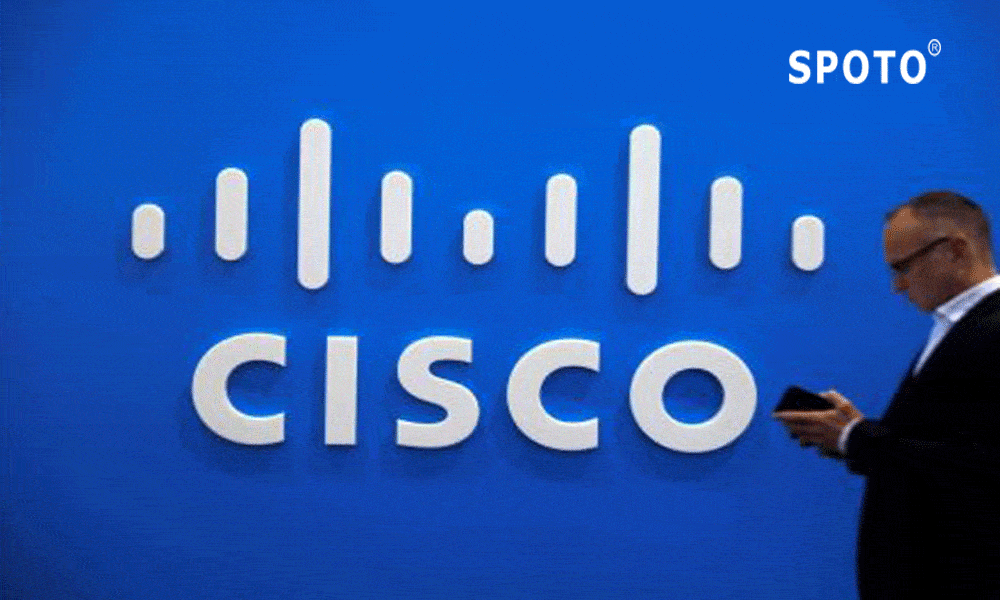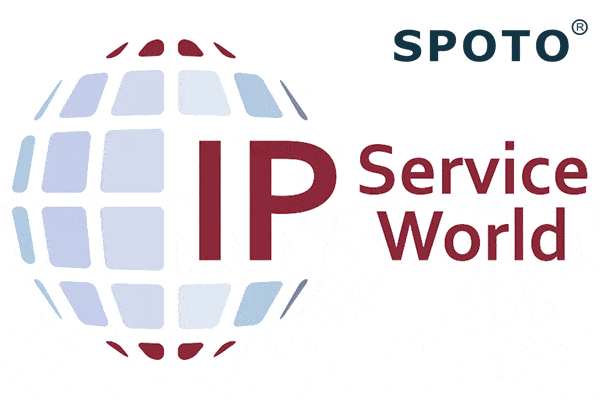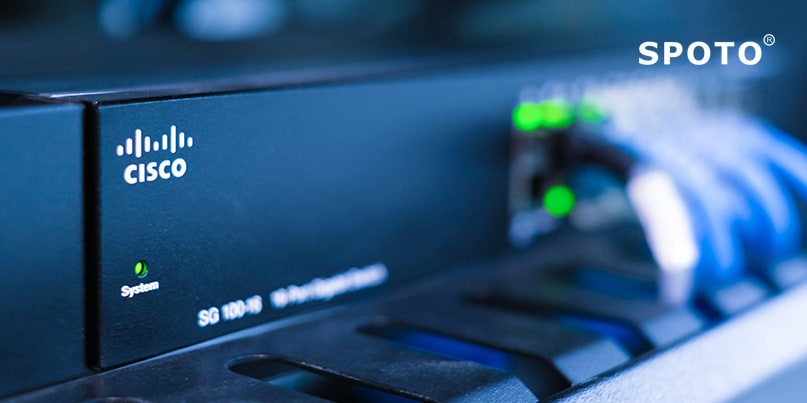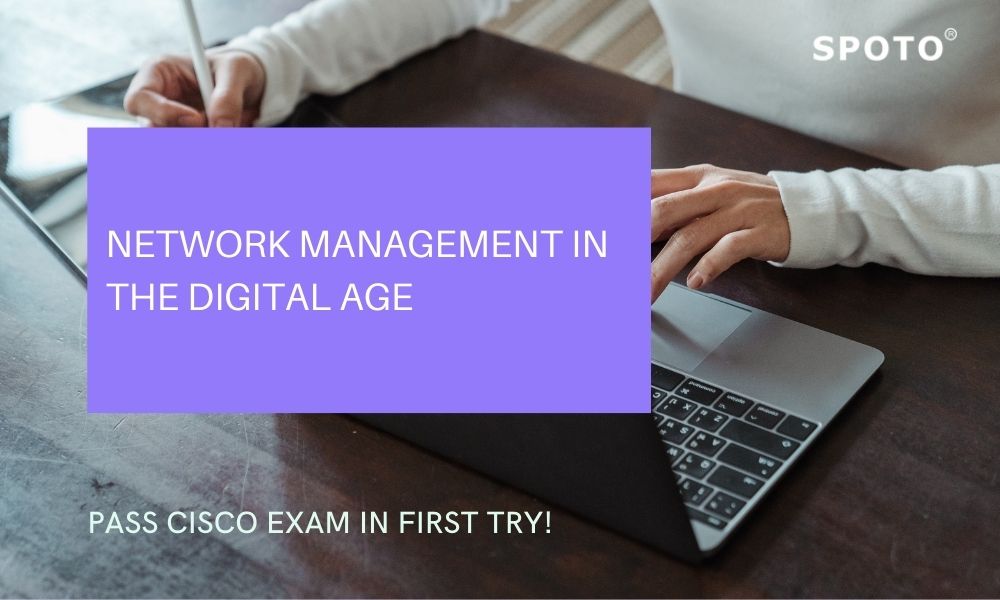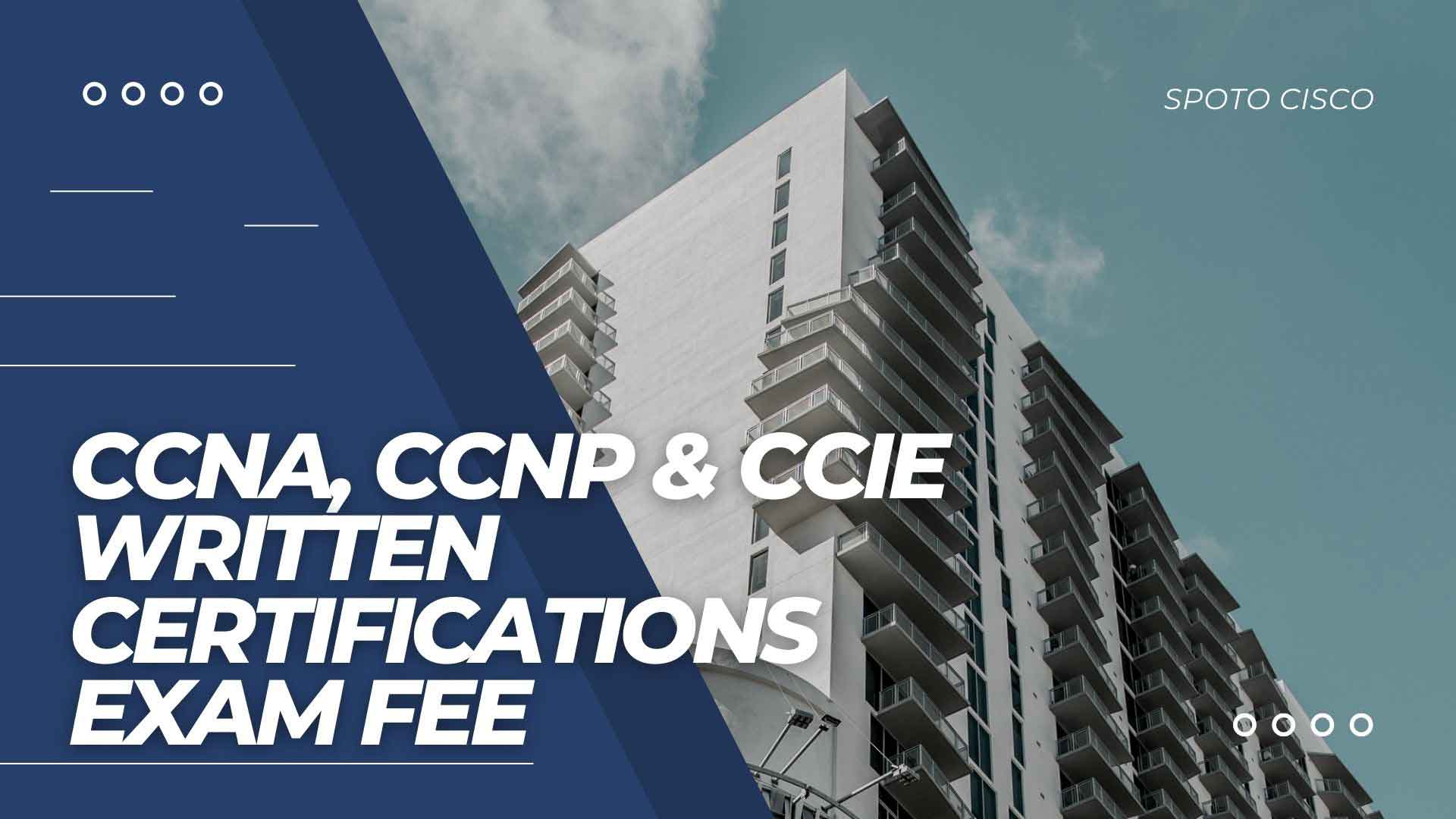-
- Cisco
- SPOTO Club
- 2024-01-16
As we all know, IT certification is a gateway to enhance your skill & salary in the IT field. Each IT professional would dream of obtaining specific IT certifications. If you are one of them and want to get certified easily, get SPOTO practice tests for 100% pass! This post will take you to understand SPOTO recent exam & dump info and passing report from Sep.21st to Sep.27th. Get SPOTO 100% Real Exam Practice Tests to Get IT Certified in 1St Try!
Latest Exam Info
The following exams & dumps are ready & pass:
Category
Exam code
Get 100% Pass Dumps!
Cisco
CCNA 200-301, CCNA 200-901, CCNA 200-201;
CCNP Security 350-701, 300-710, 300-715, 300-720, 300-725;
CCNP Enterprise 350-401, 300-410, 300-415, 300-420;
CCNP Data Center 350-601, 300-610, 300-615, 300-620, 300-625, 300-635;
CCNP Service Provider 300-510, 300-515, 300-535
PMI
PMP, ACP, PgMP, RMP
ISACA
CISM, CISA
AWS
SAA-C02, DOP-C01, SAP-C01, SY0-501
Others
HPE6-A82,AZ-301,NSE5, JN0-1331, SOA-C01, DVA-C01, 500-710, F5-201, F5-101
The following exams & dumps are changed:
AZ-500 changed on Sep.27th
SY0-501 changed on Sep.26th
300-715 changed on Sep.25th
SCS-C01 changed on Sep.25th
350-501 changed on Sep.14th
Fortinet NSE5 changed on Sep.15th
352-001 changed on Sep.8th
SAP-C01 changed on Sep. 10th
AZ-103 changed on Aug.29th
500-052 changed on Aug.28th
MLS-C01 changed on Jul. 27th
CV0-002 changed on July 7th
We are updating these exam dumps to ensure dump stability! Follow us to get the latest exam dump info!
Latest Proxy service
Click here to know more about Proxy Service!
PMI Pass News
We are pleased to announce that 60 candidates pass the PMI exams from Sep.21st to Sep.27th. PMP 40 passed the PMP exam at first try
Average prepare duration: 8 days
Pass Rate: 100%
Exam dump cover rate: 100% ACP 20 passed the ACP exam at the first try
Average prepare duration: 10 days
Pass Rate: 100%
Exam dump cover rate: 100%
Cisco Pass News
CCNA We are pleased to announce that 90 candidates pass the CCNA exam from Sep.21st to Sep.27th. CCNA 200-301 40 passed CCNA 200-301 exam at the first try
Average prepare duration: 3 days
Average score: 945
Pass Rate: 100%
Exam dump cover rate: 100% CCNA DevNet 26 passed CCNA DevNet 200-901 exam at the first try
Average prepare duration: 3 days
Average score: 943
Pass Rate: 100%
Exam dump cover rate: 100% CCNA Cyber Ops 24 passed CCNA Cyber Ops 200-201 exam at the first try
Average prepare duration: 4 days
Average score: 938
Pass Rate: 100%
Exam dump cover rate: 100% CCNP We are pleased to announce that 88 candidates pass the CCNP exam from Sep.21st to Sep.27th. CCNP Enterprise 23 passed CCNP Enterprise Core Exam 350-401 exam at the first try
10 passed CCNP Enterprise Concentration Exam 300-410 exam
Average prepare duration: 4 days
Average score: 949
Pass Rate: 100%
Exam dump cover rate: 100% CCNP Security 15 passed CCNP Security Core Exam 350-701 exam at the first try
15 passed CCNP Data Center Concentration Exam 300-710 exam
Average prepare duration: 4 days
Average score: 946
Pass Rate: 100%
Exam dump cover rate: 100% CCNP Data Center 15 passed CCNP Data Center Core Exam 350-601 exam at the first try
10 passed CCNP Data Center Concentration Exam 300-610 exam
Average prepare duration: 4 days
Average score: 943
Pass Rate: 100%
Exam dump cover rate: 100%
ISACA Pass News
We are pleased to announce that 66 candidates pass the ISACA exams from Sep.21st to Sep.27th. CISA 35 passed the CISA exam at the first try
Average prepare duration: 7 days
Pass Rate: 100%
Exam dump cover rate: 100% CISM 31 passed the CISM exam at the first try
Average prepare duration: 6 days
Pass Rate: 100%
Exam dump cover rate: 100%
AWS Pass News
We are pleased to announce that 45 candidates pass the AWS exam from Sep.21st to Sep.27th. AWS Certified Solutions Architect-Associate 24 passed the AWS Solution Architect Associate SAA-C02 exam at first try
Average prepare duration: 6 days
Pass Rate: 100%
Exam dump cover rate: 100% AWS Certified DevOps Engineer-Professional 21 passed the AWS Certified DevOps Engineer-Professional DOP-C01 exam at the first try
Average prepare duration: 7 days
Pass Rate: 100%
Exam dump cover rate: 100%
Why SPOTO?
SPOTO is an excellent online IT training institute with 17 years of experience. SPOTO offers 100% real and valid CCNA, CCNP, PMP, AWS, CISM, CISA, Palo Alto exam practices to help you fully prepare & pass IT exams. We will help you 100% pass your dream IT exams in the first attempt!
100% real exam answers and questions
Free update ensure dump stability
Free service extension in case of failure.
7/24 Technical support
17 years of experience in IT training
100% pass guarantee
Read more:
What is the AWS Certified Cloud Practitioner exam?
Where could I find the best dumps for PCNSE?
Where can I get the best Comptia+ exam questions?
What is the average salary for a CISM Certification holder?
How do I prepare for a VMware exam?
-
- Cisco
- SPOTO Club
- 2024-01-16
Hot Standby Routing Protocol otherwise known as HSRP is considered to be a Cisco proprietary protocol that would be allowing two or more routers so as to work together for representing a single IP address for a particular network. HSRP, as well as VRRP (Virtual Route Redundancy Protocol), are considered high-availability network services that would be allowing for almost immediate failover to a secondary interface when the primary interface would become unavailable.
HSRP is considered to be a fairly simple concept that would have worked by having one router within an HSRP group which would be selected as the primary or active router. That primary would be handling all routing requests while the other routers within the HSRP group that would be simply waiting in a standby state. These standby routers would be remaining ready to take on the entire traffic load if the primary router would become unavailable. In this scenario, HSRP would be providing high network availability since it routes IP traffic without having to be dependent on a single router.
The hosts that would be using the HSRP address considering it as a gateway that would never know the actual physical IP or MAC address of the routers in the group. Only the virtual IP address which was created within the configuration of the HSRP along with a virtual MAC address which would be known to other hosts on the network. Basic HSRP Configuration For this scenario, you have to use a topology that would be consisting of just two routers. Keep in mind that one or both of these routers would be multilayer switches like a 6509 or 3750 as well. But just for this discussion let us just refer them as routers.
Controlling the Active HSRP Router
There are more HSRP values that you are going to need to change from time to time so as to ensure the complete control over your network traffic. As for example, what if we would be wishing R1 to be the Active router instead of R2? To force a particular router so as to be the active router in an HSRP group you are going to need to use the priority command. The default priority is supposed to be about 100. The higher priority would be determined which router is going to be active. If both routers would be set up to the same priority, the first router to come up would be considered as the active router. Keeping the Active Router Active In the scenario which is mentioned above, if R1 fails, R2 would be becoming active. This is perfect! But, if R1 comes back up and returns to service, R2 would be continued to stay active. This might not be a preferred behavior. There are times when you might be always wanted R1 to be in an active state in the HSRP group. Cisco would provide a way to getting used to controlling this by utilizing the Preempt command. Preempt would be forcing a router in order to be active after recovering from a failure.
Advanced HSRP Configuration – Load Balancing
So now you would be able to see how great HSRP is and how it would be allowing us to have high availability between multiple routers for a single network. But the standby routers wouldn’t be doing anything and are just sitting there! It is going to be depending on the model router that you would be utilizing, this could be a lot of money just sitting idle.
In order to solve this problem, we could configure HSRP so as to be load balanced between routers. This isn’t going to help us with a single HSRP group, but for multiple HSRP groups, we could just spread the load and have each HSRP group to remain active on different routers. By configuring several HSRP groups on a single interface, load balancing of HSRP could be achieved.
If you wish to learn more about configuring the HSRP on Router, all you need to do is to join the courses, offered by the SPOTO and learn it all through their expertise training modules.
-
- Cisco
- SPOTO Club
- 2024-01-16
CCNP stands for Cisco Certified Network Professional and is considered as a Professional level certification which would be provided by Cisco as a part of their Cisco Certification program. The certification would be aiming at recognizing the individual to be capable of withholding advanced networking skill sets as well as knowledge. The syllabus of each professional certification track would be designed to cater to a specific set of technology skills to meet the needs of the industry.
The most preferred certification tracks which would be followed by individuals are Security, Routing & Switching (R&S), and Collaboration. Hence, the respective association level CCNA certified professionals, which would be followed this professional-level certification, defined for the particular track. CCNP would require good and reliable training courses, like that offered by the SPOTO Club.
Cisco Certified Network Professional (CCNP): CCNP Certification Is believed to be the Professional Level of Certification which is provided by Cisco, Please note that to attempt for this certification, CCNA is considered as a qualifying certification, it would be mean that the candidate who would be having CCNA Certification he or she are only the qualified person to Attempt CCNP Exam. CCNP certification might be obtained by clearing three requisite exams, namely CCNP Route, CCNP Switch, and CCNP TSHOOT.
Cisco CCNP Route (300–101): The Route exam 300-101 would be counting towards CCNP certification, other exams that would be required towards CCNP are: 300-115 Switch, and 300-135 TSHOOT (Short for Trouble Shooting). Note that the exams 300-101, as well as 300-115 count towards CCDP certification as well. Exam 300-101 would be also counting toward CCIP certification.
CCNP Route exam would be evaluating one's ability in utilizing advanced IP addressing as well as routing in implementing highly and scalable secure Cisco routers that would be connected to LANs, WANs, and IPv6.
Cisco CCNP Switching Exam (300–115): Switch exam 300–115 would be evaluating switching skills and knowledge of successful candidates, as well as they, are certified in planning, verifying and configuring the implementation of complex enterprise switching solutions.
EXAM RESOURCES AND PREPARATION
Professionals who are going to be undertaking this certification can take opt for alternate ways for training for the certification they wish to pursue. A few of them are listed below:
a) Professional course, provided by Cisco collaborated companies and institutes. The length of the courses, as well as the cost, depends on the custom course structure as provided by the institutes, like that offered by the SPOTO Club. It is quite a good scope for hands-on practice.
b) Self Study utilizing study material approved as well as provided by Cisco, as a part of their learning resource. Each module is considered quite different as per the certification track one would be choosing to follow.
c) Attending intensive boot camps and live classes, such as offered at the SPOTO Club.
Why Choose SPOTO Club?
SPOTO Club offers 100% real and stable exam practice tests so that you wouldn’t be wasting your money on exam fees, by giving it for your other attempts. SPOTO Club would always know that accuracy is considered to be the key while comprehensiveness is the guarantee, both of which are considered to be the foundation for a good performance in the real exam. So, you could get less as well as accurate questions at a reasonable price from SPOTO Club. SPOTO Club, founded in 2003, is considered the focus on IT certification online training for 16 years. They would be offering Cisco CCNA, CCNP, CCIE, CISSP, Amazon AWS, Oracle, CISA, RedHat Linux, Microsoft, and other IT Certification exam products to all candidates. Now, we also have CCIE online training courses to help you pass the IT exam easily in the first try.
So, if you wish to clear your CCNP Certification in a single attempt, you should even gain the prep courses, which are being offered at the SPOTO Club.
-
- Cisco
- SPOTO Club
- 2024-01-16
As an IT professional dealing with enterprise networking, you may encounter situations where the number of BGP (Border Gateway Protocol) neighbor routing entries exceeds the limit set by your service provider. This issue can arise unexpectedly and cause disruptions in your network connectivity, particularly when relying on MPLS (Multiprotocol Label Switching) lines from telecommunications companies.
In this article, we'll explore a real-world scenario where a company faced a problem with their BGP neighbor routing entries exceeding the limit, and how they approached the resolution.
The Scenario:
The company had two lines, one of which was a telecom MPLS line. They needed to pass the route to the telecom's BGP route, allowing the telecom's BGP routing protocol to be transmitted to the corresponding routing table at the company's headquarters.
The Problem:
Suddenly, the telecom MPLS line experienced a failure, prompting an alert from the network monitoring system (NETCARE). Initially, it was suspected that the fiber optic cable was broken, and the network team arranged for troubleshooting. However, the issue turned out to be related to the number of routing entries published, which exceeded the limit of 20 set by the telecom provider.
Troubleshooting Steps:
1. The network team connected to the company's core switch to check the routing releases using the "show ip route eigrp 1" command, but no abnormalities were detected.
2. They then examined the establishment of the EIGRP1 neighbor directly connected to the telecom using the "show ip eigrp nei" command, which revealed that the neighbor was down due to a holding time expiration.
3. Attempting to re-establish the neighbor using the "clear ip eigrp nei" command did not resolve the issue.
4. Further investigation revealed that the port connecting the telecom's device and the company's core device had become half-duplex, causing the line to break intermittently.
The Solution:
The telecom provider's team logged into their equipment and found that the port configuration had changed to half-duplex mode. By reconfiguring the interface speed and duplex settings using the "interface speed 100 duplex full" command, they were able to resolve the issue.
Lessons Learned:
This incident highlighted the importance of effective communication and coordination between service providers and customers. In this case, the telecom provider made changes to their configuration without notifying the customer, leading to unexpected behavior and network disruptions.
To prevent similar issues in the future, it is crucial to establish clear communication channels and change management processes with service providers. Regular monitoring and proactive troubleshooting can also help identify potential problems before they escalate.
By understanding the root cause and implementing the necessary configuration changes, the company was able to resolve the issue of BGP neighbor routing entries exceeding the limit and restore their network connectivity.
-
- Cisco
- SPOTO Club
- 2024-01-16
I. Foreword
Although 5G is currently the hottest communication technology, from the national level to major commercial companies to every ordinary consumer, almost everyone is concerned about how the new generation of communication technology can improve the performance of mobile phones, and how can help people make Life is better.
However, the innovation of network technology is not limited to 5G, there are more technologies to improve the experience together, such as Wi-Fi 6, which has recently been attracting more attention. This latest wireless local area network standard is about to play a role in the future of the further explosion of equipment scale, and has become the preferred technology for building wireless networks in homes, offices, and public places.
II. What is Wi-Fi 6
The Wi-Fi 6 standard was officially released in mid-2019. It is the latest version of the IEEE 802.11 wireless LAN standard and provides compatibility with previous network standards. It also includes 802.11n / ac, which is now mainstream. The name defined by the Institute of Electrical and Electronics Engineers is IEEE 802.11ax, and the Wi-Fi Alliance, which is responsible for commercial certification, is called Wi-Fi 6 for publicity.
The previous 802.11n / ac was also renamed Wi-Fi 4 and Wi-Fi 5 in this rebranding movement. This is of great benefit to equipment manufacturers, no longer need to spend effort to educate users, or come up with fancy marketing vocabulary, simple numbers can explain the pros and cons of the product.
The birth of the Wi-Fi 6 name has brought this technology closer to consumers. It has become an easy-to-understand technical term like 5G. Wi-Fi has also begun to transform into a consumer-oriented commercial brand, which is no longer a pure technical standard, and has a broader prospect on the road of network technology evolution.
Wi-Fi 6 introduces a number of new technologies, which have greatly improved the communication quality, transmission efficiency, energy consumption performance, and multi-device accommodation of wireless networks. The theoretical maximum rate through 160MHz channels can reach 9.6Gbps.
The introduction of OFDMA (Orthogonal Frequency Division Multiple Access) makes the data content in transmission no longer rigidly occupy the entire channel, divides the data into more detailed resource blocks for management and transmission, and realizes more efficient use of the network. It is like a large truck, from one car to one car regardless of size to a reasonable distribution. Each truck is filled to maximize the single transportation.
TWT (Timed Wakeup) makes Wi-Fi 6 more power-saving, which is helpful for mobile devices such as mobile phones and Internet of Things devices. The connection between the device and the wireless router will sleep and wake up regularly, which is equivalent to the combination of work and rest instead of working all day, which improves the power consumption performance and transmission efficiency on both sides.
The modulation method enhanced to 1024-QAM makes the data transmission and reception process more compact, and more information can be transmitted under the same signal.
Compared with Wi-Fi 5's 256-QAM, the speed can be increased by 25%. Wi-Fi 6 also uses two frequency bands, 2.4 GHz and 5 GHz, and multi-band transmission and reception reduces the embarrassment of being idle while the network is congested.
BSS Coloring allows the signal source to have its own "color". Up to 63 "colors" give mobile phones and other terminals an efficient way to find routers. Similar to the different theme colors of different take-out services, after dyeing, the router and terminal equipment can find each other more accurately and efficiently, and the communication power and time are reduced.
Wi-Fi 6 uses MU-MIMO technology in both uplink and downlink, allowing routers to use multiple antennas to communicate with multiple terminal devices at the same time, so as to achieve "multi-purpose". Compared with the design that only single antenna and single device can communicate at the same time in the past, MU-MIMO is more capable of increasing network speed and connecting more devices.
III. Why is the era of Wi-Fi 6 coming
A new standard becomes the product standard and is popularized in the market. It often needs to go through the process of the standard release, related component follow-up, product listing, and finally cost reduction and price acceptance by consumers. It is less than half a year before the official release, and the Wi-Fi 6 has been released in the early version for almost two years. How can it usher in its own time so quickly?
Although the router is a product that has not changed its power for a long period of time, most consumers have not realized the value of high-priced products, and the routers as the first Wi-Fi 6 products are high-end products at a price of 3,000 yuan. , And did not launch low-end and mid-range products anytime soon, and the popularity seems far away.
The important reason for the acceleration of Wi-Fi 6 is actually the enthusiasm of mobile phone manufacturers in introducing new standards, and high-end products have played a pioneering role in the entire market. The two flagship mobile phone products in 2019, the Galaxy S10 series and the iPhone 11 series, took the lead in applying this technology so that a larger consumer base itself has noticed Wi-Fi 6.
At the same time that market attention has been achieved, the Wi-Fi 6 standard has also been officially released, allowing related products of upstream manufacturers to enter the market one after another. The introduction of router chips, PC network cards, mobile phone chips, and other products has enabled the Wi-Fi 6-based ecosystem to be built, covering high-end, low-end positioning, and promoting the explosion of terminal products.
Personal terminal products mainly based on mobile phones and notebooks have shown consumers' demand for network improvement, forcing router manufacturers to follow up related products.
Consumers are waiting for wireless network upgrade The changes in the network environment are also the factors driving Wi-Fi 6's attention.
The speed and quality of the network brought by the 5G network are unforgettable for those who have experienced it. However, the monthly traffic limit and 5G coverage prevent people from getting the same network performance at home or other indoor environments.
At the same time, Gigabit networks have begun to spread throughout the country, and they have entered more homes in the context of growth and fee reductions. In Shanghai, they only need a 199-month fee to use Gigabit networks. There are not many routers that can release Gigabit network capabilities, and this is precisely the scenario where Wi-Fi 6 matches the theoretical performance.
IV. Wi-Fi 6 coming in the first year
It can be said that 2020 will be the 6th year of Wi-Fi.
Although the first batch of products did not enter the market this year, it has really spread to the masses of consumers and related products of different consumption levels are expected to become the mainstream of sales in the market this year. We will continue to pay attention to what kind of performance Wi-Fi 6 will bring and what new direction it can lead.
-
- Cisco
- SPOTO Club
- 2024-01-16
Selecting professional certification with innumerable opportunities is immensely important for high professional growth in a short span. If you are also searching for the best professional certification course then the CCIE Data Center course is one of the best options for you.
Cisco CCIE Data Center certification course comes with lots and lots of opportunities as it is highly demanded in the IT industry. Let’s know about the Cisco CCIE Data Center certification in detail
What is CCIE Data Center?
CCIE Data Center certification is offered by Cisco for imparting the detailed knowledge of Data Center to the students. During the Cisco Data Center training, you will learn the skills of handling the complex Data Center infrastructure which includes designing, planning, implementing as well as managing the Data Center network. Remember, to pursue your Data Center training from the best Cisco CCIE Data Center training institute such as the industry is full of opportunities only for skilled professionals.
What is the scope of the CCIE Data Center certification?
As we have discussed above, Cisco Data Center certification is greatly demanded in the IT industry. It is one of the highly prestigious IT certifications in the industry. This certification is recommended for the experienced IT professionals or the candidates with knowledge of Cisco R&S, Security, etc. You could experience a steep growth after pursuing this certification. A CCNA and CCNP level IT engineer with around 3 years of experience can expect a hike amid 70% to 100% after the course. To gain the CCIE Data Center Certification isn’t going to be easy though. You should have to go through lots and lots of training and practice, in order to become successful in the exam. Also, you would require a good and reliable training provider, like the SPOTO Club, which could help you out to ease up your study process.
Why pursue CCIE Data Center at SPOTO Club?
If you want to reap the available opportunities, then you would be required to have an in-depth knowledge along with the practical skills to handle the Data Center network. SPOTO Club has specially designed the DC training course keeping in mind the requirements of the IT industry. The CCIE Data Center training course at SPOTO Club not only imparts in-depth knowledge but also provide practical exposure to students for making them an expert.
Below are various other reasons, to join SPOTO Club for pursuing CCIE DC course, have a look
SPOTO Club, an online IT training institute, is committed to high-edge IT professionals and accelerating the process of training IT, technical professionals. SPOTO Club provides various valuable exam materials and trusted services involving Cisco certification, CISSP, Linux, Cloud computing, Big Data, AI and so on, which will instantly enhance customers’ value and improve personal potential. Their mission focuses on the customers’ demand and continues to enhance our creativity. They would cast much time into developing online courses so that they are growing rapidly and improving customers’ career process.
SPOTO Club is a leader in the IT industry and has taken a huge breakthrough in recent years. SPOTO Club’s commission is to be your trusted partner in reaching your career goals. Over the past 16 years, SPOTO Club has helped millions of IT professionals to achieve their goals. They would also offer real exam materials and the best service to help you clear various certification exams. SPOTO Club is a unique certification institute in the world.
So, if you are searching for the best Cisco CCIE training institute in India, then SPOTO Club is the best option for you.
-
- Cisco
- SPOTO Club
- 2024-01-16
CCIE Routing and Switching v4.0 Quick Reference: Network Optimization would be covering the SLAs, SPAN, RSPAN, NetFlow, and RITE as well as Cisco IOS EEM.
IP Service Level Agreement (SLA)
One of the most important aspects that would be needed to consider in maintaining a network is providing a guarantee of an explicit level of service to customers. In order to ensure that such an agreement is met at all times, IOS would be providing a mechanism so as to actively test specific metrics, called IP SLA. When configured, the IP SLA service would be active monitors a specific aspect of the network, like the DNS response time, UDP VOIP jitter, ping latency, and so on. If the IP SLA thresholds are not met, IOS would be sending a notification, like an SNMP trap or syslog message.
NetFlow:
As packets are going to be sent through router interfaces, they could be classified into flows. This information could be sent from the router so as to monitor the server that could be providing valuable information about the traffic traversing the network. A flow could be described by a number of fields:
Destination IP address
Destination port
Interface
Protocol type
Source IP address
Source port
Type of Service
In order to determine if a packet belongs in a particular flow, the seven packet fields are going to be inspected. If anyone of the fields would be different, the packet in question which could be considered a new flow. NetFlow statistics could be collected on the following types of networks: IP, MPLS, Frame Relay, and ATM. You could learn all of these in detail, by joining the SPOTO, which is the best institute for Cisco Certifications.
SPAN, RSPAN, and RITE (Router IP Traffic Export)
Viewing the packets between two devices is often considered the best way to troubleshoot a networking issue. Many organizations would be deploying network monitoring servers for both network functionality as well as security purposes. In order to provide these servers a stream of data from all the segments of the network, the Switched Port Analyzer (SPAN) mechanism built into Cisco switches would be utilized. A SPAN port is considered as a physical port that is configured so as to send data which would be received on other ports or VLANs. When the data is sent out the SPAN port, it would be simply a copy of all the data that would have been sent through the configured source ports.
The SPAN functionality assumes that the destination of the traffic would be directly connected to the switch. If the network is large, it might be not possible to wire a single monitoring station to multiple switches along with SPAN ports. Fortunately a special remote SPAN (RSPAN) VLAN could be created that would be transporting the SPAN port information into another switch. This would be enabling aggregation of monitoring data into a single VLAN that could be sent to the monitoring station.
Cisco IOS Embedded Event Manager (EEM)
In the normal operations of the switch or router, events like the CLI command, a syslog message, or an SNMP trap, for example, could be occurring constantly. These events would be detected by the EEM Event Detectors that would be sending their information to the EEM server. The EEM server can then be programmed for the implementation of an EEM policy.
Now, if you wish to learn all of it in detail, you could do it by joining the preparation courses which are being offered by the SPOTO. When it comes to various IT certifications, SPOTO would be considered the best destination for you.
-
- Cisco
- SPOTO Club
- 2024-01-16
An illustrious way for expanding your career, while enhancing your knowledge as well as being able to autonomously reveal your level of expertise, would be earning a respected IT certification. With sufficient time, preparation as well as dedication, any challenge could be overcome. Also, you will need a good training partner, like the SPOTO Club’s IT Certification. There are lots and lots of Certification programs from which you could choose as per your requirements and as per experience. So check out the SPOTO Club’s Website for selecting the courses which are best for you. Here are some basic tips for the success of the candidates who are pursuing the IT certification exam.
Get to Know Your Exam
This might sound excessively simple, but your first step for achievement would be to know the challenge you are going to face. Every exam would be having some sort of candidate guide or exam guide and an official site, so those are good places to start. The official website would be helping you to find basic information on the certification and the exam; it would also provide links to a lot of helpful information, like the official training providers, a little sample questions, how this certification would be appropriate into an overall certification path, official forums as well as the candidate or exam guide. If you wish to have a reliable training partner, the SPOTO Club’s IT Certification Online Training would be the best.
Get Involved In an Exam Prep Course
Deciding to develop a self-study-only approach for facing an IT certification might seem like an intrepid decision, but it might not be the best strategy. Some certifications might include official training as a indispensable requirement. On the other hand, even if it isn’t obligatory, it is important to understand; that achieving exam success would necessitate in-depth knowledge of several different subjects, even for entry-level certification. The best way to gain it would be through the SPOTO Club’s IT Certification Training. The definitions, as well as an understanding of some of these topics, might vary, which would be depending on the point of view of whatever certification body would be responsible for developing the exam.
Take Practice Exams
Whenever available, practice exams would be a great way to test you. It is not only a question of having a good grasp over the subject on which you would be tested but also to get to know about how the questions would be structured, as well as what the small nuances are that could completely change a sentence or even the whole question. Again, it is strongly in favor of using official training material and question databases, which you could gain at the SPOTO Club’s IT Certification Study Dumps, as it would be the best approach for emulating the real exam.
Join the Online Community
There would be no deficient of online material as well as communities for most IT certification exams. Taking part in online forums would be serving you to learn as well as share exam strategies, which would help you to learn from other’s success as well as failure stories. As for finding the proper online community, apart from the obvious official forums of the certification body, if you wish to have proper training materials, you could have it through the training materials, which you could gain through the SPOTO Club’s IT Certification. SPOTO Club’s IT Certification Online Training sessions offer training for various IT Certification preparation Programs. When it comes to IT Certification, SPOTO Club would be the best place to gain the preparation materials, through which you could gain IT Certification in a single attempt.
-
- Cisco
- SPOTO Club
- 2024-01-16
Cisco would be developing numerous certifications, and these certifications would be evolving. The recently designed CCNA program would be able to help you prove your skills in the ever-changing IT landscape. Until now CCNA would have consisted of domains such as Routing and Switching, Collaboration, Security, Data Center, Service Provider, etc. but it would be now covering network fundamentals, network access, IP services, IP connectivity, security fundamentals, as well as automation and programmability.
Why would have Cisco brought changes to the certifications?
IT Industry Experts would be proving that IT Networking is considered to be one of the fastest-growing industries. It would be growing at this speed due to the introduction of new developments and technologies. These developments in the IT industry would be now demanding new skills as well as job roles. The Certification Program would be depending on the integrity of protecting the organization as well as on the relevancy of products designed.
What Changes Cisco has done in their Certifications?
DevNet Certifications Introduction: DevNet Certifications would be forming a critical as well as the key component of the transitioning program for people from the Software and Programming Industry could be making maximum utilization of these certifications.
Elimination of Pre-requirements at the Associate as well as Professional Level: In order to bring in variety and flexibility in choice for the candidates.
Continuing Education: Continuing education would have proved to be the method for earning some extra credits for re-certification.
Acknowledgment for Completing Training Courses: Candidates would be now gaining the acknowledgment even after passing one out of two modules.
Updating and Consolidating of CCNA Certifications: Combining numerous domains to form a module that would be providing fundamental knowledge.
Concentration exams choice available for at the Professional Level: Choices would be available for candidates for specializing in the domain of interest.
Modernized Certification Paths: Modernized Certification Path where the candidate would be now are required to give only 2 exams instead of 4 exams.
Lifetime Tenure Emeritus: Lifetime tenure Emeritus for CCIE certifications which would be maintained continuously for about 20 years.
Now that you have acquired the knowledge of all the changes, it is recommended that if you wish to pursue the new CCNA Certification program, you should opt for the training courses which could be obtainable from the SPOTO Club.
New CCNA 200-301 Certification Overview
New CCNA 200-301 Landscape Program would be helping you to prove your skills in the ever-changing IT Landscape. The new CCNA Certification would be validating numerous fundamentals under one roof with only one training program as well as one exam. The modules that would be comprised of the CCNA program are Security Fundamentals, Network Fundamentals, IP Connectivity, Network Access, Programmability, Automation, and IP Services. CCNA Certification would be providing you the foundation to take your career in several directions.
Continuing Education at CCNA Level
Continuing Education which was available only for the CCIE holders would have now made available for the CCNA and the CCNP Level also. It is considered to be an alternative mechanism for re-certifying the CCNA program. Either the candidates could take up the exam and get re-certified or they could just accumulate continuing education credits. Continuing Education Credits could be collected by numerous means like attending Cisco Live or contributing to the exam which would be offering process and get credits for the same. These accumulated credits could be then utilized for re-certification.
So, you have acquired lots of knowledge regarding the new and latest CCNA Certification and would be attracted to achieve it. If you do so, you should check out the study dumps, which are being offered at the SPOTO Club and use them for your study for the New CCNA Exam.
-
- Cisco
- SPOTO Club
- 2024-01-16
Cisco IOS Software would be containing a wide array of critical network services that would be designed for scalability, flexibility, as well as reliability to help them solve the most difficult problems which would be faced by enterprises and service providers. Customers could select the appropriate Cisco IOS Software feature sets to meet their evolving network requirements. Features like the NAT (Network Address Translation), DHCP (Dynamic Host Configuration Protocol), and HSRP (Hot Standby Router Protocol) could be easily deployed individually or in combination with each other around a wide range of Cisco hardware. If you wish to go in more depth, you should opt for the study dumps, offered at the SPOTO Club, they will help you out in gaining any Cisco Certification at the first attempt.
Cisco IP Services would be comprised of lots of basic as well as advanced building blocks that would be enabling the customers to:
Deploying an IP network with common end-to-end IP connectivity.
Managing their IP addressing requirements from a central location.
Controlling the IP addressing scheme utilized throughout the network.
Providing redundancy at major network connection points.
IP Addressing Services
An IP address is considered to be a 32-bit number written in dotted decimal notation: four 8-bit fields or octets, which would be converted from binary to decimal numbers, separated by dots. The first part of an IP address would be identifying the network on which the host would be residing while the second part would be identifying the particular host on the given network. The network number field is known as the network prefix. All hosts on a given network would be sharing the same network prefix but must have a unique host number. In classful IP, the class of the address would be determining the boundary between the network prefix as well as the host number.
Finding Feature Information
Your software would be releasing might not support all the features which would be documented in this module. For the latest caveats as well as feature information, observe the Bug Search Tool and the release notes for your platform as well as a software release. To find information about the features which would be documented in this module, as well as to observe a list of the releases in which each feature would be supported, see the feature information table. Utilize Cisco Feature Navigator for finding information about platform support as well as Cisco software image support.
IP Source Routing
The software would be examining the IP header options on every packet. It would be supporting the IP header options Strict Source Route, Loose Source Route, Record Route, as well as Time Stamp, which would be defined in RFC 791. If the software would be finding a packet with one of these options enabled, it would be performing the appropriate action. If it finds a packet with an invalid option, it would send an ICMP (Internet Control Message Protocol) parameter problem message to the source of the packet as well as discards the packet.
ICMP Overview
Created for the TCP/IP suite in RFC 792, the ICMP (Internet Control Message Protocol) would be designed for reporting a small set of error conditions. ICMP could also be reporting a wide variety of error conditions as well as provide feedback and testing capabilities. Each message utilizes a common format and is received and sent by utilizing the same protocol rules.
ICMP doesn’t ensure the delivery of datagrams or make IP reliable or the return of a control message. Some datagrams might be dropped without any report of their loss. The higher-level protocols that utilize IP must implement their reliability procedures if reliable communication would be required.
For more information, check out the training courses offered at the SPOTO Club, to gain success in your certifications.
-
- Cisco
- SPOTO Club
- 2024-01-16
350-701 SCOR Implementing and Operating Cisco Security Core Technologies
Duration: 120 minutes
Languages: English and Japanese
Price: $400 USD, (plus tax)
Similar to CCNP Routing and Switching ENCOR 350 – 401 examination, we would be having CCNP Security SCOR 350–701. The CCNP Security SCOR 350-701 certification exam would be helping the candidates in understanding the concepts of implementing as well as operating core security technologies such as content security endpoint protection, secure network access, security cloud security content, endpoint protection as well as detection secure network access, visibility, as well as enforcement. In order to gain this the Cisco Professional status, you would be required to appear for 2 exams. CCNP Security Core Exam as well as, one out of the six security concentration exam.
The Core Exam would be known as the Implementing and Operating Cisco Security Core Technologies Pearson VUE which would be hosting this 120 minutes exam.
Concentration Exam to the CCNP SCOR Exam Code 350-701
SNCF - Securing Networks with Cisco Firepower Exam Code 300-710
SISE - Implementing and Configuring Cisco Identity Services Engine Exam Code 300-715
SESA - Securing Email with Cisco Email Security Appliance Exam Code 300-720
SWSA - Securing the Web with Cisco Web Security Appliance Exam Code 300-725
SVPN - Implementing Secure Solutions with Virtual Private Networks Exam Code 300-730
SAUTO - Automating and Programming Cisco Security Solutions Exam Code 300-735
CCNP Security SCOR 350-701 Examination Cost
The CCNP Security SCOR 350-701 Exam would be hosted by Pearson VUE. Pearson VUE would have recently declared the exam costs for all the exams.
Here they are:
The CCNP and CCIE Security Core SCOR 350-701 Official Certification Guide would be published in April 2020, after which you could confirm on the syllabus. The CCNP Security SCOR 350-701 would be first taken up on 24th February 2020.
If you would be having any more doubts about the CCNP Security SCOR 350-701, you could enroll yourself into the SPOTO Club’s Training Courses to secure your success.
Salary after 350-701 Certified Exam:
The demand for network security engineers would be increasing day by day. A network Security engineer would be required to focus on design as well as the configuration of networks and managing network support. CCNA Security, CCNP Security as well as CCIE security would be the certifications which would be offered job-ready practical skills to a candidate. These certifications would be able to make a candidate eligible for designing, configuring and engineering secure network infrastructure. A certified network security cloud security engineer could easily utilize features of Cisco IOS, Cisco Adaptive Security Appliance, Software Security, s well as VPN and therefore incorporate them into a single security solution. These features would be closely aligned particularly to the fulfill job responsibilities of the Network Security Engineer.
Salary Package after 350-701 Exam:
According to the Indeed, Salary which would be estimated for the CCNP Security would be stating that on an average CCNP Security professional salary would be ranging from approximately $87,915 per annum for Network Engineer to $109,474 per annum for Network Security Engineer. As per Payscale, for this position, the professional would be earning about $113K per annum in the United States. While ZipRecruiter would be observing the annual salaries to the highest at about $161,500 and lowest about $18,500, the majority of salaries within the CCNP Security jobs category presently would be ranging between $31,000 which is 25th percentile to $120,500 which would be 75th percentile across the United States. Thus if you wish to acquire such high salary figure and know security concepts, you have to gain the CCNP Security Exam and for that, you have to clear the 350-701 SCOR Exam, to begin with, and for that, you should opt for the training courses which are being offered at the SPOTO Club to achieve success in passing it with a single attempt.
-
- Cisco
- SPOTO Club
- 2024-01-16
Take heart if you are trying to manage your network and spending hours making sure all devices are correctly set, reading through countless logs to uncover the underlying cause of difficulties, and asking why you don't have better tools.
You place a high value on your network. After all, it is the network that defines the consequences of your company endeavors in significant part. Whether you're looking to improve your company processes or your consumer experiences, you're going to need to rely on your network. The network must expand, perform, maintain security, and most importantly, be agile to react to the inevitable, and sometimes rapid, changes that occur when your projects adjust to constantly evolving ground realities.
Networks are becoming more complicated to satisfy the increasing demands of users, devices, objects, apps, and the cloud, and enterprises are having difficulty managing them to fulfill their business needs. They frequently employ numerous tools, perform manual CLI setups, and troubleshoot by attempting to recreate the situation and reading over logs. This takes too long, is prone to errors, and consumes network engineers' time with low-value tasks.
This is the first in a series of posts about various facets of intent-based networking.
The Ascension of the Intent-Based Network
As a result of these problems, enterprise networks are transitioning to an intent-based networking model. In contrast to traditional networks, where many day-to-day activities are manual, intent-based networks (IBN) automate the network's essential functionality. They take high-level business intent as input, transform it into network policies, configure network devices to carry out the policies and monitor these devices to ensure that the policies are followed. Because of this set of capabilities, IBN is suited for reaping the benefits you foresee from your digital transformation activities.
The network controller is at the center of an intent-based networking deployment. Network controllers exemplify network management's growth from simple element managers to more powerful network managers and SDN controllers. While the development of SDN controllers increased software control, automation, and programmability, it was limited in scope and manufactured to order. On the other hand, full network controllers go beyond SDN controllers and contribute to the realization of the whole concept of intent-based networking.
At the center of intent-based networks are network controllers.
Network controllers perform the necessary policy, activation, assurance, security, and integration services critical to implementing an intent-based network.
Policy: Controllers accept as input business intent and translate it into network policies. For example, the controller may understand the intention to hold a multiparty telepresence conference at 10 a.m. to implement appropriate bandwidth, QoS, and encryption procedures in the wired and wireless campus and WAN networks.
Activation: Controllers activate the underlying network infrastructure, which is made up of switches, routers, and wireless equipment, by producing the necessary configurations and provisioning the devices following the stated policy. The controller, in our case, would arrange network devices to provide the given service levels.
Assurance: Controllers examine network data to identify any problems preventing the network from behaving following policies. For example, the controller may identify a loss of video quality in a network segment, determine the root reason, and give the user the necessary remedy.
Security: Controllers have complete insight into the network's users, devices, things, and applications. This enables them to spot odd behavior or anomalies that may indicate a threat. Controllers might take precautionary measures to protect the workplace, workloads, and personnel.
Controller APIs allow for programmatic two-way interaction between the network and external business and IT applications. These APIs also enable controllers to communicate with one another to synchronize the fulfillment of shared business intentions across numerous networks. An external program, for example, may direct the controller to configure devices for an important meeting.
Conclusion
Controller-led architectures are becoming indispensable due to their range of capabilities. Organizations are discovering that they can significantly reduce manual effort, minimize security risks, save operating costs, boost regulatory compliance, and ensure that the network is continually changing, learning, and aligning with business demands. If you want to know more about Cisco knowledge, please try SPOTO Cisco exam dumps to learn the latest technology! Please try the SPOTO Cisco training course and Cisco exam dumps to help you get the Cisco certification on the first try!
-
- Cisco
- SPOTO Club
- 2024-01-16
A distance-vector routing protocol in data networks resolves the best route for data packets on the basis of distance. Distance vector routing protocols would be measuring the distance by the number of routers which a packet has to clear, one router could be counted as one hop. Some distance vector protocols would be also taken into account network latency as well as other factors that would be influencing traffic on a given route. To determine the best route across a network, routers, on which a distance vector protocol would be implemented, exchange information with one another, basically, the routing tables plus hop counts for destination networks and perhaps other traffic information. Distance vector routing protocols also necessitate that a router informs its neighbors of network topology would be changing periodically.
The term distance vector would be referring to the fact that the protocol would be manipulating vectors (arrays) of distances to other nodes in the network. The distance vector algorithm was originally the ARPANET routing algorithm and it was implemented more widely in LANs (Local Area Networks) with the RIP (Routing Information Protocol).
If you're working towards your CCNP, CCIP, or CCDP certifications then the BSCI - Building Scalable Cisco Internetworks exam (642-901) applies to all three of these certifications. The BSCI exam is all about advanced IP addressing and routing and it tests your knowledge and skills on implementing scalability for Cisco Integrated Services Routers (ISR) connected to LANs and WANs. In case you wish to study for the Cisco Certification Courses, you should opt for the SPOTO Club to ensure your success.
Some of the topics that the BSCI exam covers include:
Advanced IP addressing
Routing principles
Multicast routing
IPv6
Manipulating routing updates
Configuring basic BGP
Configuring EIGRP, OSPF, and IS-IS
Let's begin with a description of the operational principles of the two routing classes and afterward, I'll get into the details on their actual operation and design.
Why Two Dynamic Routing Protocol Classes?
There would be different routing classes which are available for providing a more spherical solution packet. Different networks would be having special individual needs and different routing protocols would have been designed to meet the individual needs of these networks. There is no straightforward answer on the right routing protocol to utilize.
Distance Vector Routing Protocols
Distance Vector routing protocols would be based on their decisions on the best path to a given destination on the basis of distance. Distance is usually measured in hops, though the distance metric might be a delay, packets lost, or somewhat similar. If the distance metric is considered as hop, then each time a packet goes through a router, a hop would be considered to have traversed. The route with the least number of hops to a given network would be concluded to be the best route towards that network.
Link State Routing Protocols
Link state protocols are also considered to be the shortest-path-first protocols. Link state routing protocols would be having a complete picture of the network topology. Hence they would know more about the whole network than any distance vector protocol.
Three separate tables would be created on each link state routing enabled router. One table is considered to be utilized to hold details about neighbors which are connected directly, one is utilized to hold the topology of the entire internetwork and the last one is to be utilized for holding the actual routing table. Link state protocols would be sending information about directly connected links to all the routers in the network.
So, you might have gained the basic knowledge of the Dynamic Routing Principal. If you wish to have more detailed knowledge do join the SPOTO Club, for better results.
-
- Cisco
- SPOTO Club
- 2024-01-16
On Monday, June 10, 2019, Cisco would have announced an unprecedented revamp of its certification program. This post would be diving into one of the major updates, the new CCNA certification. First, if you would have to prepare currently for your CCNA or any other CCNA for that matter, don’t panic. Now that you have exceeded the final date of certification, you would have to go through the New CCNA Certification Exam.
Even if you would be just thinking about going for a CCNA certification, you would be required a full CCNA, before the deadline, to be granted the new CCNA certification. So, now you are going to have certain new topics in the New CCNA Certification Exam. Let’s have a brief overview of it. But before that, if you wish to gain the New CCNA Certification Exam in a single attempt, you should opt for the training courses which are being offered at the SPOTO Club.
New CCNA 200-301 Exam Description:
CCNA Exam v1.0 otherwise known as CCNA 200-301 is considered to be a 120-minute exam that would be associated with the CCNA certification. The course, Implementing and Administering Cisco Solutions (CCNA), would be helping the candidates to prepare for this exam.
The following topics are considered to be the general guidelines for the content which would be likely going to be included on the exam. At a superiorly high level, the topic categories break down are as follows:
Network Fundamentals: 20 percent
Network Access: 20 percent
IP Connectivity: 25 percent
IP Services: 10 percent
Security Fundamentals: 15 percent
Automation and Programmability: 10 percent
Now, let’s delve into each of the above-mentioned categories in-depth:
Network Fundamentals:
Here, you would be required to have some basic knowledge, like the different types of topologies out there, the role of routers and switches in a network, troubleshooting cabling issues, copper/fiber cabling information, IPv4 and IPv6 addressing, comparing TCP and UDP, verifying IP address parameters in numerous operating systems, wireless basics, as well as switch operations.
Network Access:
In this area, you would be required to know about VLANs, trunking, as well as EtherChannel, and wireless networking concepts.
IP Connectivity:
Then, you would be reviewing how routing works, focusing on static routes and OSPFv2. You would be noticing the absence of RIP, EIGRP, and GP. Also, you would require knowing some theory of VRRP, HSRP, and GLBP.
IP Services:
In this category, you would be exploring numerous IP services like NTP, SNMP, DHCP, and QoS.
Security Fundamentals:
This section would be establishing you to security fundamentals along with a discussion of some specific security mechanisms, which would be including VPNs, Layer 2 security mechanisms, as well as wireless network security.
Automation and Programmability:
This is considered to be the big one! Moving away from the CLI, this category would be gaining into controller-based SDN, REST APIs, Cisco DNA Center, Puppet, Chef, as well as JSON-encoded data. You would be definitely required to have the new CCNA training. For accelerating your learning, regardless of what you would have to decide to do, pursuing the New CCNA track or beginning studying for the new CCNA, one thing you would require to have a solid understanding of networking fundamentals. And, since Cisco dramatically has changed the state of play this morning, you should get help you master the fundamentals.
So, if you wish to have more knowledge regarding the new topics, you should opt for the New CCNA Training Courses Offered at the SPOTO Club. As when it comes to Cisco Certification, SPOTO Club is considered to be the best training provider which helps the candidates to achieve their desired certification in a single attempt.
-
- Cisco
- SPOTOclub
- 2024-01-16
Cisco certification cost is quite expensive, but the quality of training and certifications you will receive from such an esteemed organization is unparalleled. The CCNA Security certification cost is no different in this regard, as the value of a CCNA Security certificate has been proven to help individuals excel in their professional careers.
CCNA Certification Cost
- Cisco Certified Network Associate (CCNA) Routing & Switching: $300 USD
- Cisco Certified Network Associate (CCNA) Security: $400 USD
- Cisco Certified Network Professional (CCNP): $450 USD
- Cisco Certified Internetwork Expert (CCIE) Written Exam: $1,200 USD
Benefits of Obtaining a CCNA Certification
- Obtaining a CCNA certificate validates your skills in networking technologies, allowing you to stand out from other IT professionals.
- Having a CCNA certification on your resume can open up more job opportunities that require a higher level of expertise.
- With a certified team, business organizations can save time and money on costly IT projects.
- It provides proof to employers that you have the knowledge and experience to be successful in your role.
Why Invest in CCNA Security?
- The demand for cybersecurity professionals continues to grow across the globe due to increased threats of cyber attacks. A CCNA Security certification provides you with the necessary skills and knowledge needed to become a trusted security expert.
- With an ever-increasing need for secure networks, having a CCNA Security certification will give employers further confidence in your abilities to create secure networks and systems without compromising user data or exposing them to malicious threats.
- Additionally, with the complexity of networks increasing each day, having a CCNA Security certificate will prove invaluable when it comes to troubleshooting and resolving security issues.
The Value of Investing in Certifications
Investing in certifications such as those offered by Cisco does not come cheap but are well worth the investment for those looking for long-term career success and advancement within their chosen field. Not only do certifications provide valuable credentials but can also lead to higher salaries depending on your level of expertise and experience in the industry. Furthermore, having these credentials can set you apart from other applicants when apply for jobs as they demonstrate dedication towards obtaining high-level credentials which employers respect highly.





